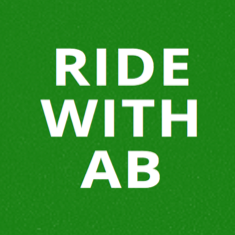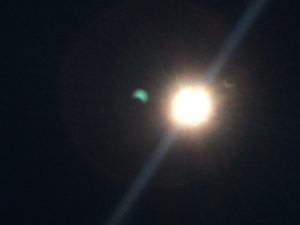On Monday, August 21, 2017, all of North America will be treated to a total solar eclipse. Well, I can’t miss it, so 2 of my kids, Caroline and Alberto, and my sister Carmen are driving to Jefferson City, Missouri to view this awesome event that occurs only once every 100 years or so. (I guess this is my last chance) We have our Amazon eclipse safety glasses on hand and are ready to go. Some more info below and I will post some more after the trip.
I had to extend my visit with parents, and cancel out of the road trip with my kids. Mom and I watched the eclipse from the park on 4th St. downtown Winston-Salem, NC. I only got 95% coverage, not bad.
Very hard to photograph, eclipse glasses and iPhone camera
This file photo is exactly what we saw at 2:41PM, 95% coverage.
From the nasa.gov website: Eclipse: Who? What? Where? When? and How? | Total Solar Eclipse 2017
Where Can You See It?
You can see a partial eclipse, where the moon covers only a part of the sun, anywhere in North America (see “Who can see it?”). To see a total eclipse, where the moon fully covers the sun for a short few minutes, you must be in the path of totality. The path of totality is a relatively thin ribbon, around 70 miles wide, that will cross the U.S. from West to East. The first point of contact will be at Lincoln Beach, Oregon at 9:05 a.m. PDT. Totality begins there at 10:16 a.m. PDT. Over the next hour and a half, it will cross through Oregon, Idaho, Wyoming, Montana, Nebraska, Iowa, Kansas, Missouri, Illinois, Kentucky, Tennessee, Georgia, and North and South Carolina. The total eclipse will end near Charleston, South Carolina at 2:48 p.m. EDT. From there the lunar shadow leaves the United States at 4:09 EDT. Its longest duration will be near Carbondale, Illinois, where the sun will be completely covered for two minutes and 40 seconds.





